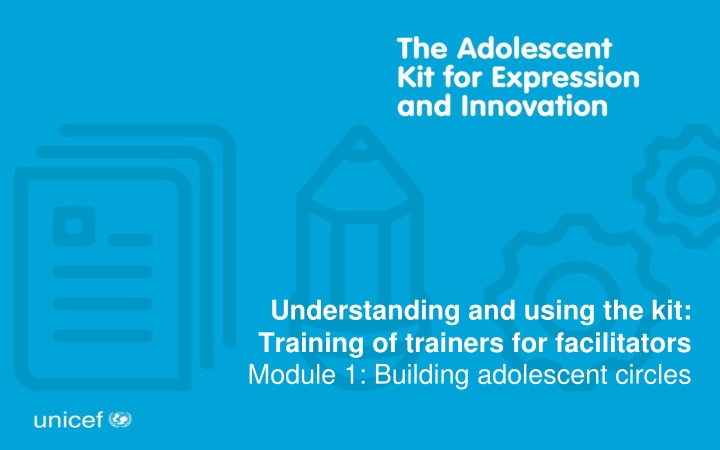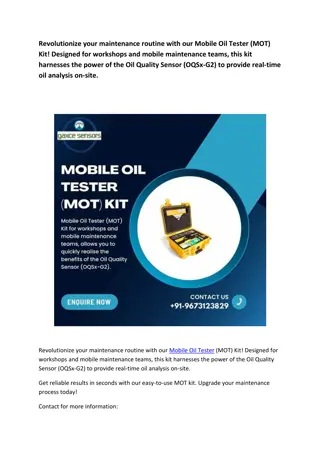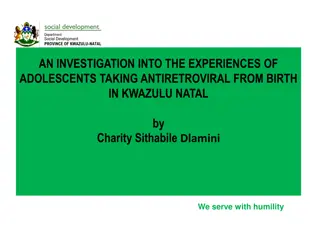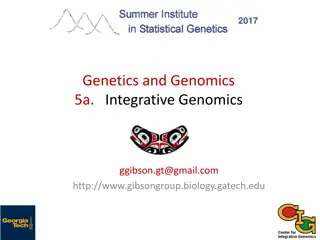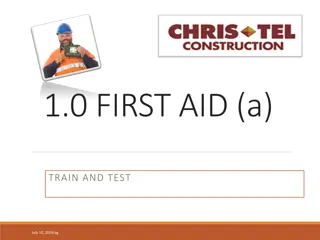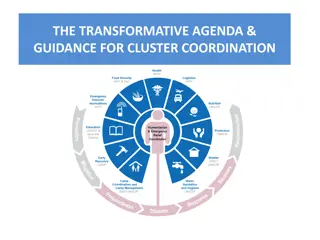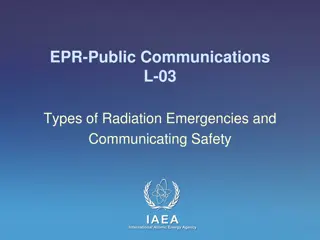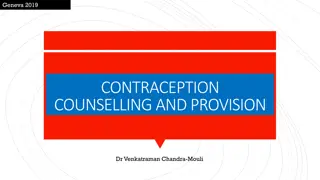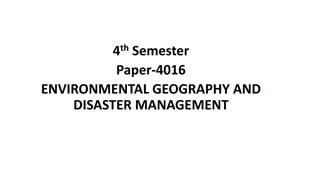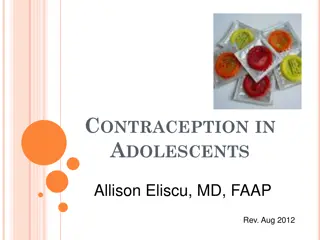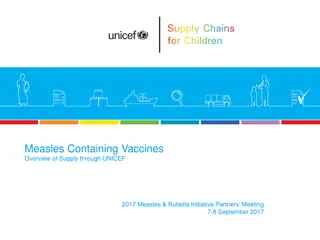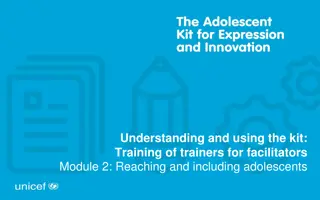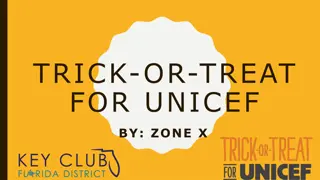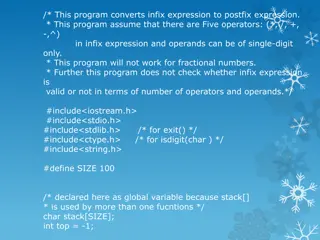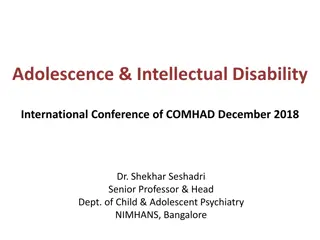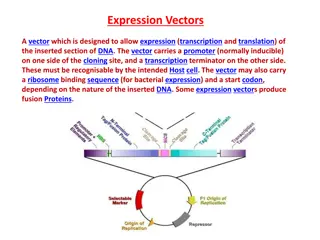Supporting Adolescents in Emergencies: UNICEF's Kit for Expression and Innovation
UNICEF's Adolescent Kit for Expression and Innovation provides a comprehensive package of resources to support adolescents (ages 10-18) during and post emergencies. It integrates psychosocial support, life skills, adolescent participation, and peacebuilding principles. The kit includes guidance for facilitators and program coordinators, along with supplies for engaging activities. Created to address the needs of adolescents in crises, it aims to empower them to contribute positively to humanitarian response and community building.
Download Presentation

Please find below an Image/Link to download the presentation.
The content on the website is provided AS IS for your information and personal use only. It may not be sold, licensed, or shared on other websites without obtaining consent from the author.If you encounter any issues during the download, it is possible that the publisher has removed the file from their server.
You are allowed to download the files provided on this website for personal or commercial use, subject to the condition that they are used lawfully. All files are the property of their respective owners.
The content on the website is provided AS IS for your information and personal use only. It may not be sold, licensed, or shared on other websites without obtaining consent from the author.
E N D
Presentation Transcript
Understanding and using the kit: Training of trainers for facilitators The Adolescent Development and Participation Module 1: Building adolescent circles Section Priya Marwah, Adolescents in Emergencies and Peacebuilding Specialist Ellen Fransen, Programme Assistant Juliet Young, Consultant
1.1 Introduction to the Adolescent Kit for Expression and Innovation: A toolbox of resources to support our programme
What is the Adolescent Kit for Expression and Innovation? It is a package of resources to support programmes for adolescents (children ages 10-18) during and after emergencies. It is designed for use in child protection, education and/or youth development programmes and partnerships. It reflects a cross-sectoral approach, integrating psychosocial support, life skills, adolescent participationand peacebuilding principles, goals and methods. The Adolescent Kit includes: Guidance for facilitators to lead activity cycles with and for adolescents Guidance for programme coordinators to plan, support and oversee programmes for adolescents Supplies to make the activities more feasible, engaging and rewarding
UNICEF created this kit because Adolescents (people ages 10-19) are a key age group affected by conflict, disasters and other humanitarian crises; Most adolescents those who are ages 10-17 - are children within UNICEF s mandate as custodians of the Convention on the Rights of the Child; Adolescents are at risk of violations of their rights, including the risk that they do not have a chance to learn and grow to their full potential; and Adolescents have the ability and the will to make positive contributions to humanitarian response programmes and to restore and build their communities.
Yet UNICEF and partners often struggle to support this key age group with programmes and interventions that are appropriate to adolescents developmental needs and abilities; reach and address the adolescents who are most in need and most marginalised (e.g. those with disabilities, those who are married, those from minority groups); reflect and address adolescents own interests and priorities; and apply best practices from all of our technical knowledge in psychosocial support, life skills education, and positive engagement.
What is in the Adolescent Kit for Expression and Innovation? The Adolescent Kit for Expression and Innovation includes: Guidance and tools for facilitators who are working directly with adolescents and facilitating activities Guidance and tools for programme coordinators who design, manage and oversee programmes and interventions for adolescents A Supply Kit with carrying cases, materials and supplies to make activities for adolescents more feasible and engaging, especially in low-resource environments
What is in the Kit? (continued) Clarification of terms used to describe the resources in the Kit: Guidance: Explanation of how to plan, facilitate, monitor, and work with adolescents (These are included in print and electronic format) Tools: Diagrams, checklists, and other materials (Also included in print and electronic format) Supplies: Physical materials facilitators and adolescents use during their activities (such as paper, pens, marker boards, floor mats, etc.) These include reusable supplies (such as the marker board) and those that are not reusable (such as paper, tape and glue).
Guidance and Tools Guidance and tools for facilitators and programme coordinators in the Adolescent Kit are designed to be used flexibly along with other materials that may already be available or in use in programmes for adolescents. Choose and adapt the guidance and tools that are most relevant the situation and needs of adolescents in your context to start a new programme or strengthen an ongoing programme. Discussion: What other guidance and tools are we already using in our programme(s) for adolescents?
The Supply Kit, and Guide The Supply Kit is intended especially for places where programmes are starting for the first time, and for places that are remote and hard to reach. You don t have to have the Supply Kit to use the guidance and tools. Most of the activities in the guidance don t require any supplies.
The Supply Kit, and Guide If you are using the Supply Kit, use the supplies included along with things you buy and make locally. Supplies in the kit were chosen so that you can easily replace them. Build on the positive by encouraging adolescents to find and use the resources around them. Recognize their potential to be creative even in challenging conditions. Build on the positive
1.2 Adolescents in humanitarian contexts
Discussion: How do the global patterns in issues facing adolescent in humanitarian contexts compare to the circumstances of adolescents in our programming context?
Discussion: What are some of the key challenges and opportunities facing adolescent girls and boys ages 1 17 in our programming context? Programme Coordinators Guide; Investigate Adolescents Situation
Discussion: What are some of our knowledge gaps with respect to adolescents ages 10-17 in our programming context? Which adolescents ages 10-17 are less visible in our context? What should we learn more about adolescents situations in our context as we plan programmes to reach and engage them? Reach out to all adolescents
1.3 Ten key competencies for adolescents: The purpose of the Adolescent Kit for Expression and Innovation
The Ten Key Competencies
Group Work: What terms are used to describe this competency in the local language? Write words or phrases. What does an adolescent who has developed this competency look like? Draw a picture of an adolescent girl or boy who has developed this competency well.
Group Work (continued): In what ways do we see adolescents in our programme context already developing and using and using competencies in this domain? In what ways could developing and using competencies in this domain enable adolescents to overcome the challenges or take advantage of the opportunities they face? (See notes from session 1.2) If adolescents have the opportunity to fully develop and use competencies in this domain, what further positive changes can they make in their own lives? If adolescents can fully develop and use competencies in this domain, what further positive changes can they make in their community?
Competency Domain: 1. We see adolescent girls and or boys using competencies in this domain when 2. If adolescent girls and boys have more opportunities to develop and use this competency, they can overcome challenges or take advantage of opportunities in their lives by 3. If adolescent girls and boys fully develop and use this competency they can make positive changes in their lives by 4. If adolescent girls and boys fully develop and use this competency they can make positive changes in their communities by
1.4 Ten Key Approaches for working with and for adolescents
The Adolescent Kit for Expression and Innovation supports facilitators, programme coordinators and adolescents in using ten Key Approaches for working with and for adolescents to develop and use the ten Key Competencies. The Ten Key Approaches bring together important methods, standards and principles from: Psychosocial support Life skills education Child/youth participation Equity Conflict sensitivity and peacebuilding Human rights-based approaches to programming
The Ten Key Approache s for working with and for adolescent
Key understandings: Using Ten Key Approaches is essential to supporting adolescents in developing and using the Ten Key Competencies. If facilitators, programme coordinators, and everyone else working with and for adolescents put these approaches into practice, our programmes are most likely to be effective in supporting adolescents development and use of the ten Key Competencies. These Ten Key Approaches reflect UNICEF s core principles and standards. Using these Ten Key Approaches almost always requires doing some things differently from our usual ways. It requires that we take time for practice and support each other. How we work with and for adolescents is fundamental to what we achieve with and for adolescents.
Group Work: Focus on one of the Ten Key Approaches. Write a list of do s and don ts for how facilitators should put this approach into practice. Do s: When using this approach, facilitators should always Don t s: When using this approach facilitators should never
Group Work (continued): Matching dos and don ts with the right approach Write each of your do s and don ts on a separate card. Place the do or don t next to the approach for which it is most relevant. Review discussion: Are there any do s or don t s that would be better placed with another of the ten Key Approaches?
